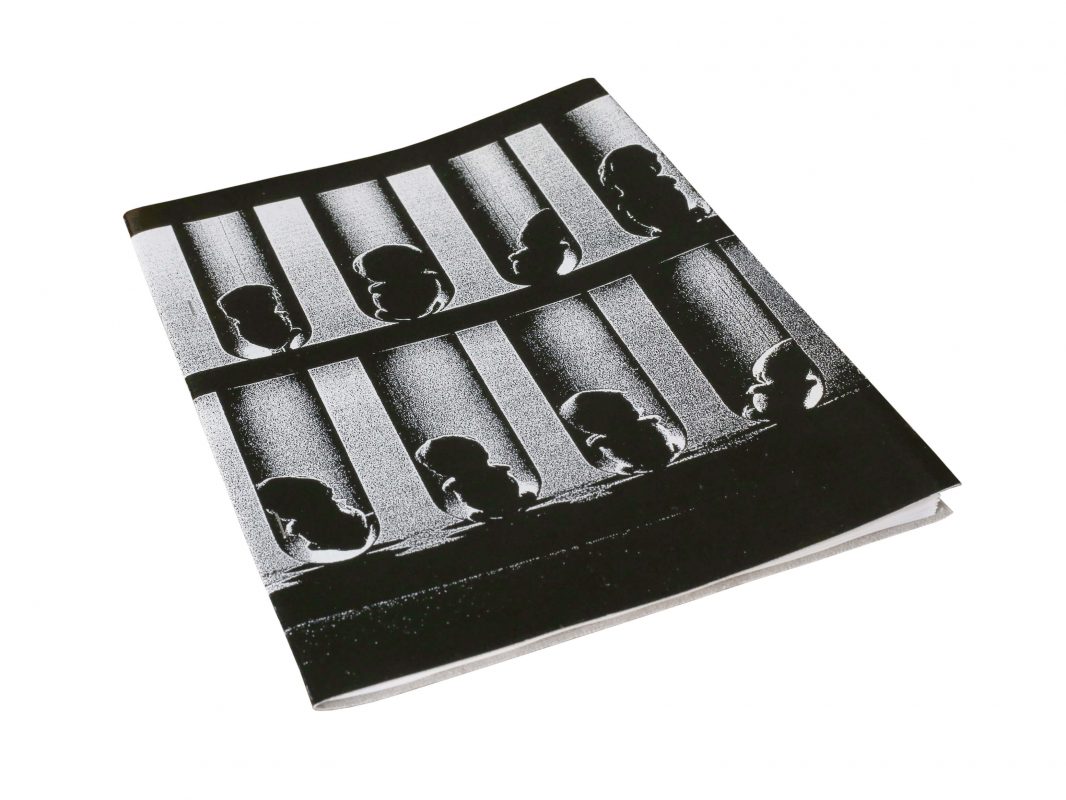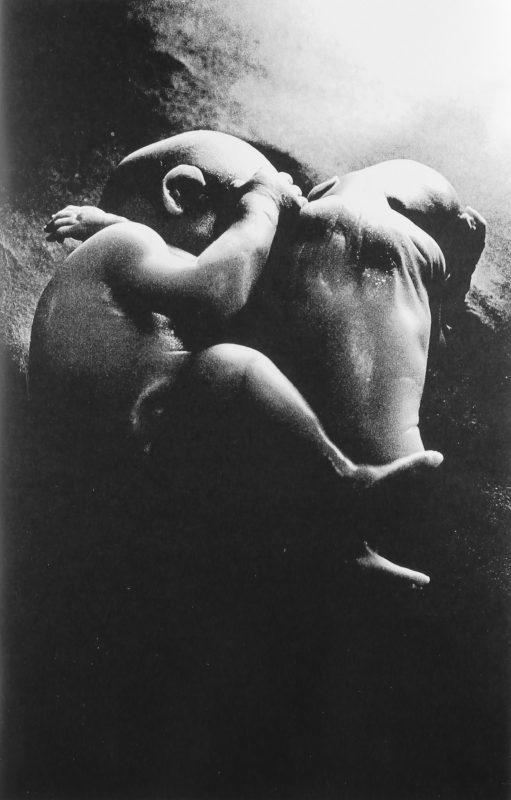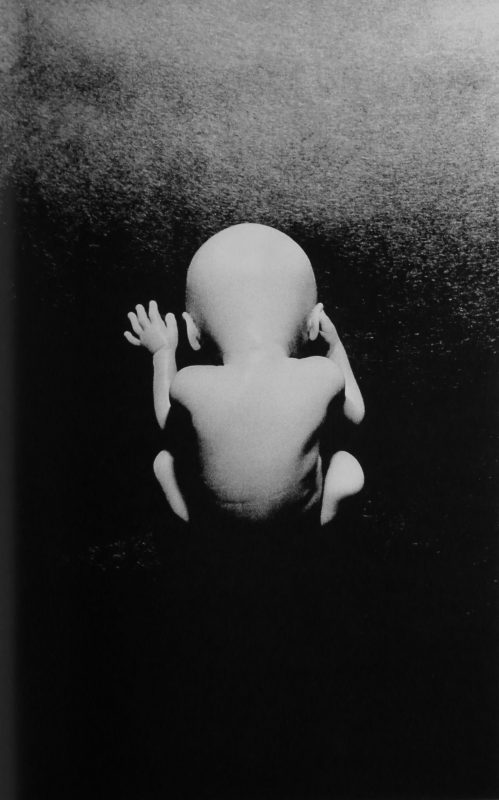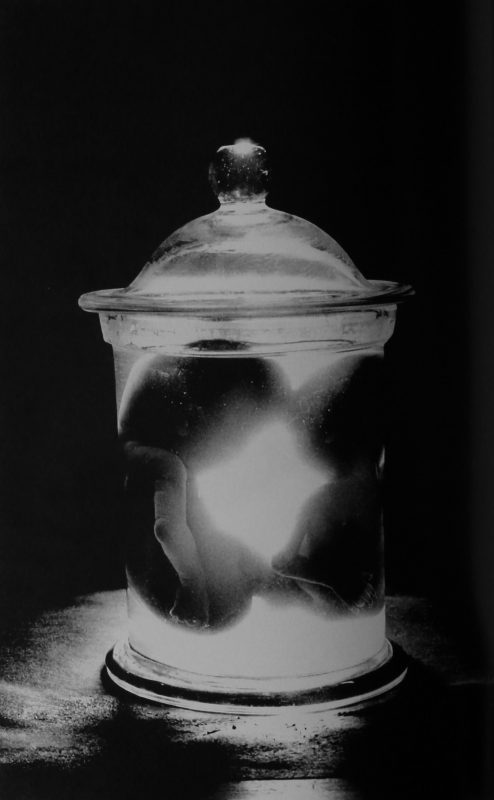Daido Moriyama
Pantomime
Akio Nagasawa Publishing
With thin pages between organic-feeling cloth covers, this slight book of photographs seems as delicate and fragile as life itself. Its first image, shot from a dispassionate distance, could be of a tiny pair of strange prawns, touching at the tail. But the next picture, a distressing close-up, dispels any illusion of the non-human: what look like two cowering newborns hug each other, all wrinkled skin and baby-fat wrists. Visual correspondence between two images – common and commonly inconsequential in photobooks – has rarely been used with such life-and-death profundity. For these are not prawns or live babies. They are dead embryos and dead foetuses.
Heartrending yet detached and neutral, Moriyama’s stream of never-borns ebbs and flows between the amorphous and the gravely human. Potent individual images abound: a male silhouette’s hands are stretched out, as if trying to grab onto life; another is dumped upside-down into a translucent bag, the human treated inhumanely. But most powerful of all is a recurring luminous figure, its face to the floor, seemingly trying to crawl. Immobile, we see it from behind, from above, from the side: a few grainy, refulgent pictures of apparent failure which stand for all human helplessness and despair. Nothing could be further from the globally-celebrated scientific wonder of Lennart Nilsson’s roughly contemporaneous pre-natal foetus photographs.
Made over half a century ago, Moriyama’s pictures reflect his embryonic career as a struggling young photographer. But they offer much more. Most of them are ethereal, almost unreal, and the heartbreak they provoke is all the stronger for their sensitivity and gentleness. They also demonstrate a level of traditional technical accomplishment and control not readily associated with an artist best known for rejecting photographic conventions and pushing his medium to a new frantic extreme of unfocused grain and blur.
Most importantly, Pantomime is the work of a young image-maker who is already a true artist, even before finding what we think of as his own photographic voice. At a very early stage of his development, Moriyama created the base material he has now formed into one of his finest photobooks. ♦
Images by Simon Bowcock, courtesy Akio Nagasawa and © Daido Moriyama




